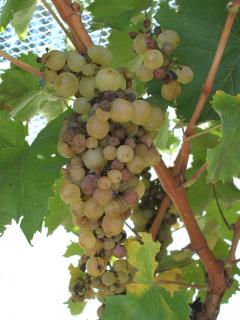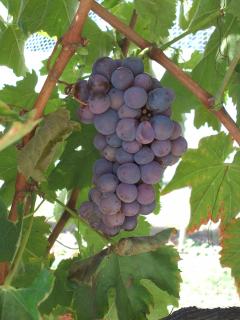Furmint at Manjimup
Furmint, taken from the word ‘froment’ meaning wheat-gold colour, is believed to have originated from Hungary where it has contributed to producing the famous Tokaji Aszú wines for centuries.
Its thin skin, high acid and susceptibility to Botrytis makes Furmint ideally suited to producing sweet botrytised wine. The dry table wines are also well regarded.
Typically these wines are high in alcohol, full-bodied, rich, high acid with citrus and stone fruit flavours.
Furmint (clone E2V11) vines at Manjimup displayed an upright growth habit and good establishment. But they routinely display poor fruit-set and investigation as to the cause, including nutrition analysis, has not provided a remedy.
As well as poor fruit-set, Furmint shows a high susceptibility to powdery mildew early in the season.
For this reason, Furmint has performed poorly in the Manjimup trials and has not been suitable to the area. Wines display peach characters with an overall simple vinous flavour.
Kadarka at Manjimup
Kadarka is believed to have been introduced into Hungary during the Turkish occupation. It is grown in most Eastern European countries but the best wines come from the Szekszárd and Villány wine regions of Hungary.
It is known as Skadarska in Yugoslavia, Gamza in Bulgaria and Cadarca in Romania. When fully ripe, Kadarka produces wines of medium to full body, fiery spiciness and fine tannins worthy of aging.
Kadarka (clone F13V3) vines showed good establishment in trials, however fruit produced routinely fails to reach sugar maturity therefore wines have not been produced. In some years, fruit produced by Kadarka also fails to achieve consistent anthocyanin production in skins, often retaining a green colour.
Kadarka is highly susceptible to Botrytis and becomes infected early in the season with skins that easily ‘slip’ from berries.
Kadarka vines have an upright growth habit and produce numerous bunches with a medium level of compaction.
Reference
Robinson, J 1996, Jancis Robinson’s guide to winegrapes, Oxford University Press, Oxford.


